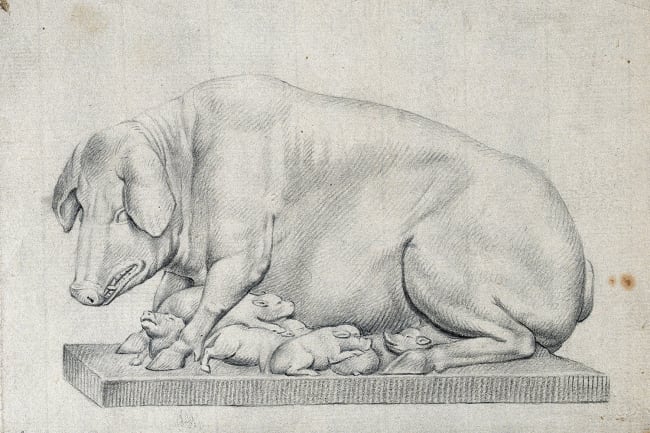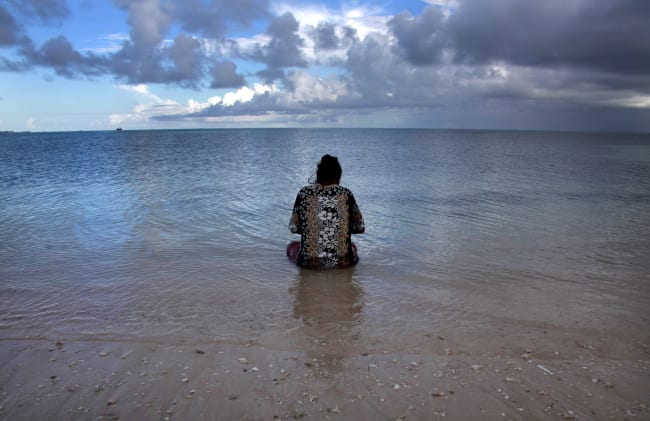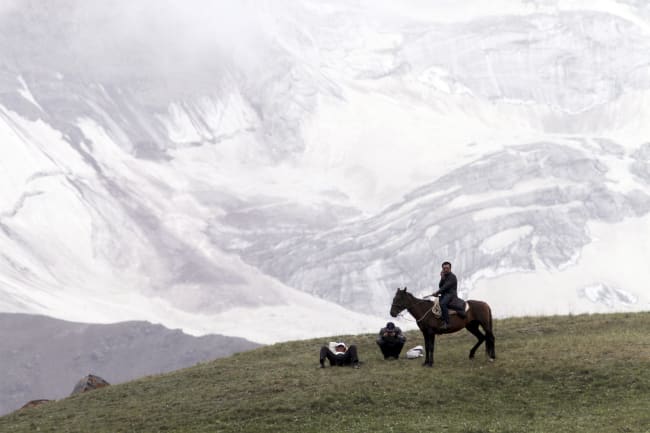Erik Meijaard knew as soon as the virus arrived in Borneo: the bearded pigs simply disappeared.
It was early 2021, and even as the COVID-19 pandemic consumed the world's attention, African swine fever virus was creating a shadow calamity for the world's pigs.
With fatality rates approaching 100%, African swine fever has spread around the world in the past decade. The virus struck southeast Asia in 2018, decimating China's hog industry. It can infect the world's 18 species of wild pig—including Borneo's iconic bearded pig—with the same ease and swiftness as domestic pigs, depopulating large swaths of rainforest and palm oil plantations with ease.
For wild pigs, their numbers already threatened by habitat loss, African swine fever was a conservation catastrophe. But Meijaard, a conservation biologist and former chair of the International Union for Conservation of Nature (IUCN) Wild Pigs Specialist Group who has worked in Borneo for years, knew that African swine fever would also have human repercussions.
With fatality rates approaching 100%, African swine fever has spread around the world in the past decade
Many of the island's non-Muslim peoples continue to rely on hunting the bearded pig as a main source of meat, protein, and fat. More than that, pigs have a cultural significance, as hunting them has helped cement relationships and serves as a social lynchpin for Indigenous peoples. The sudden disappearance of a cultural keystone species would leave a huge hole in their society, says Meijaard.
Yet Meijaard says that the local government has done little to address the problem. It's why he and his colleagues penned a recent letter to the journal Science to call for more attention and resources to be devoted to African swine fever in southeast Asia.
"Not only is it a conservation issue," Meijaard says, "there's a really important question about what happens to people if their food source completely disappears."

African Swine Fever's First World Tour
Western scientists first encountered African swine fever more than a century ago. British colonists raising pigs in East Africa noticed sudden, swift die-offs of their animals.
Disease was mild and endemic in warthogs, the reservoir species for the virus, but devastating in pigs. The germ in question is a large, hardy DNA virus that causes lethargy, vomiting, hemorrhage, and death. Luckily, it doesn't affect humans.
If you have activities mixing between farming and hunting and you can spread basically disease in both directions
Kevin Morelle, wildlife ecologist
African swine fever can sweep through a herd with astonishing ease, says Kevin Morelle, a wildlife ecologist at the Max Planck Institute of Animal Behavior in Germany. Although the virus struck domestic pigs in Europe in the 1950s and 1960s, it didn't jump to the region's wild boar. Through improved biosecurity and culling of exposed animals, the fever was initially eliminated in Europe everywhere but Sardinia.
Ongoing movement of pigs and pork products, which can carry and transmit the underlying virus for weeks, led the virus to reemerge outside Africa in the republic of Georgia in 2007. African swine fever has continued a steady northwesterly march ever since, moving with equal ease in domestic pigs and the region's burgeoning population of wild boar.
"If you have activities mixing between farming and hunting and you can spread basically disease in both directions," Morelle says.

Arrival in Asia
African swine fever struck Asia for the first time in 2018, when Chinese hog farmers began reporting outbreaks. China is by far the world's largest producer and consumer of pork, and the outbreak caused dramatic swings in pork prices worldwide as countries like the United States scrambled to (quite literally) bring home the bacon.
Despite aggressive culling and biocontainment strategies, African swine fever continues to spread. One potential reason is the virus jumped to wild pig species, which frequently mingle with domesticated animals on small farms. Like Borneo's bearded pigs, many of these species had already shown sharp declines due to habitat loss even before the outbreak of the virus. In some places, numbers have plummeted by more than 90%, says Ludek Broz, an anthropologist at the Czech Academy of Sciences and principal investigator of the BOAR Project.
On places like Borneo, Papua New Guinea, and the Philippines, where rural communities still depend on hunting wild pig for a significant portion of their food, pigs take center stage.
"When I talk to local people about orangutans, they get very bored," Meijaard says. "But as soon as I talk about pigs, I get lots of stories. They're reenacting their last hunt. There's just a lot of excitement."
Let's say that suddenly the United States lost 80% of its pork. The pigs just vanished. What would people do now?
Erik Meijaard, conservation biologist
In urban areas, where families shop for their food at stores and markets rather than hunting it directly, Meijaard says that alternative protein sources are more readily available. But that's not necessarily true in more isolated areas that experience more prolonged and profound nutritional stress. Meijaard cites food security as a major threat from African swine fever, but says that governments have responded slowly, if at all. His letter to Science was an attempt to push for more attention and research to understand the impacts of African swine fever in local populations.
"Let's say that suddenly the United States lost 80% of its pork. The pigs just vanished. What would people do now?" Meijaard says. That's the scale of the problem in Borneo, he says.
The ripple effects could be wide reaching. Some scientists even suggested that the prolonged unavailability of pork may have even helped trigger the COVID-19 pandemic in China because people turned to wild animals as a replacement protein source. But Broz cautions that not everyone is dismayed at the sudden disappearance of pigs.
The digging and rooting behaviors that make these swine a keystone forest species also make them an agricultural hazard. Surging numbers of wild boar in Europe have made the animals a major nuisance, and Meijaard says that some farmers on Borneo share a similar ambivalence about bearded pigs.
But for those people who still depend on pigs, African swine fever puts them on a precipice.
"It's an illness that ruins the livelihoods of people, and we know that poverty kills," Broz says.













